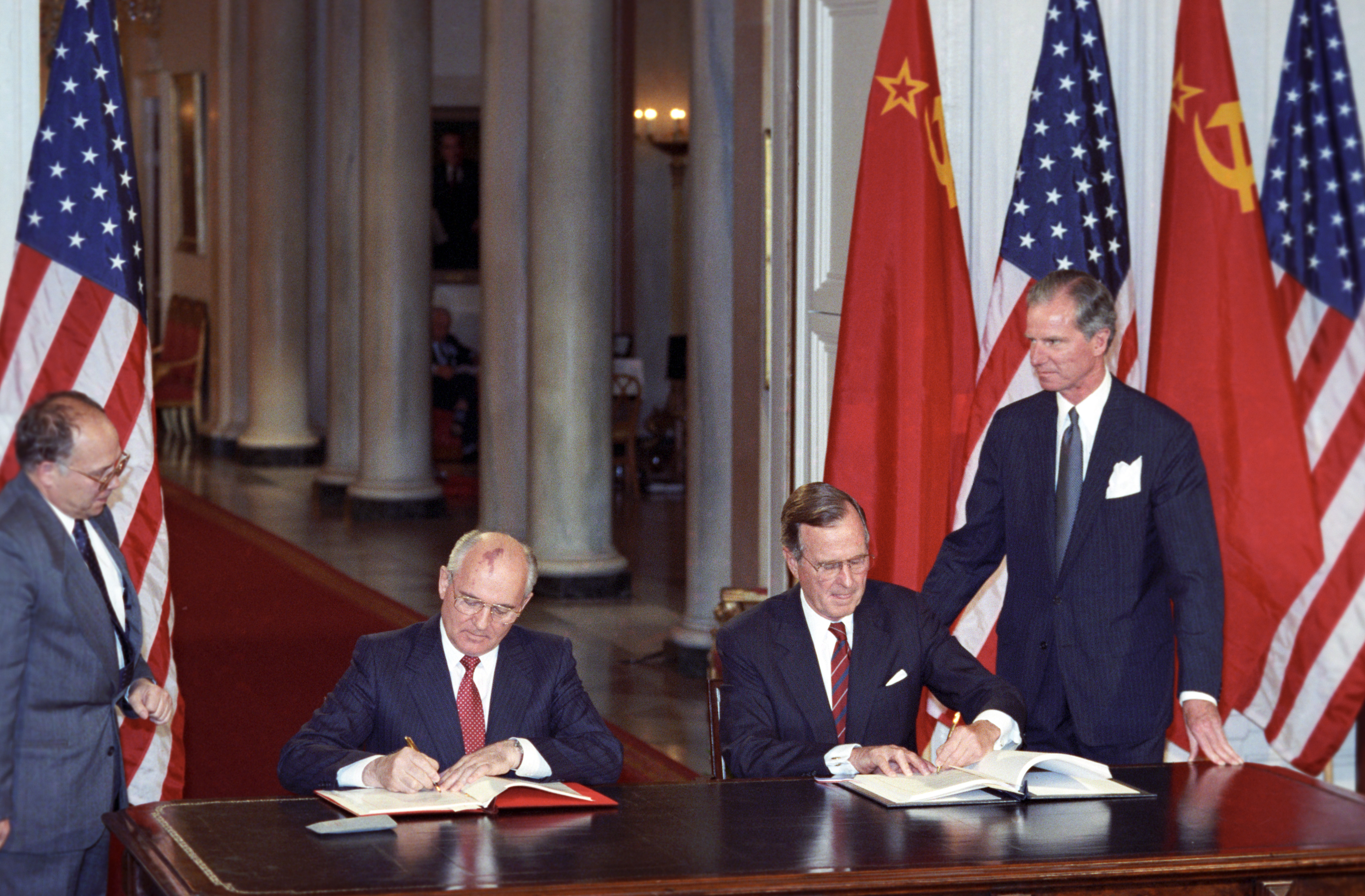ID :
350249
Fri, 12/05/2014 - 11:02
Auther :
Shortlink :
https://oananews.org//node/350249
The shortlink copeid
START-1 symbol of Cold War end - US expert

WASHINGTON, December 5. /TASS/. The Russian-U.S. Strategic Arms Reduction Treaty START-1, which came into force twenty years ago, has become a symbol of the Cold War end, the director of Nuclear Information Project of the Federation of American Scientists /FAS/ Hans Khristensen said in an interview to TASS.
The treaty, which expired on December 5, 2009, was signed by the Soviet Union and the United States in July 1991. It was the first ratified treaty on control over weapons to really ensure reduction of deployed strategic weapons and establish a strict control regime with inspections to monitor its compliance.
In this sense, the treaty was unique. It symbolized the end of the Cold War and the establishment of new relations between the United States and Russia, relations of more cooperation and transparency, the expert said.
START-1 was a model to prepare other agreements on nuclear disarmament between Russia and the United States, including START-2 of 1992, which was dropped in 2002. Nevertheless, START-1 has largely determined the current structure of nuclear forces of Moscow and Washington, Khristensen said.
Along with this, the START-1 verification regime became the basis for the new Strategic Offensive Reductions Treaty of 2010. In the United States, it is called the Treaty on Measures for the Further Reduction and Limitation of Strategic Offensive Arms, which took effect on February 5, 2011.
START-1 has “played a key role" for former opponents to assure each other that the nuclear weapons reduction process was really going on, and the treaty ensured future strategic stability.
The verifiability, transparency and predictability created a positive atmosphere for other states - Great Britain and France - to be sure that it was safe for them to cut their nuclear weapons, Kristensen added.
The positive and constructive experience gained by Moscow and Washington showed that it was important to continue talks to reach other agreements for transparent and verifiable disarmament to ensure strategic stability in the future. It is particularly important at present in connection with the current crisis between the East and the West, the expert noted.
By the way, Chairperson of the Committee on Intelligence of the Senate of the US Congress Dianne Feinstein /a Democrat from California / on Thursday spoke out against the channeling of 355 billion dollars into the U.S. nuclear armament. The United States keeps much more nuclear weapons than it needs, and the cost of this undermines other priorities of national security, she said. Such levels of spending on nuclear weapons are not needed. It is impossible to keep them. It is time to think carefully about how the size of the arsenal can be responsibly reduced, she added.
Feinstein has proposed the U.S. government to dispose at least a part of decommissioned nuclear weapons. It can be done without new talks with Russia on further disarmament. Such steps will not have a negative effect on national security and the potential of global containment, she said.
At the same time, U.S. authorities are signaling that they do not intend to cut strategic nuclear weapons unilaterally and do not see prospects in the near future to open a new round of disarmament talks with Moscow.
Speaking on Tuesday at senate committee hearings, Robert Scher nominated by the White House to be an adviser to the defence secretary, confirmed that Obama’s administration did not intend to cut nuclear weaponry without bilateral work with the Russians, but it was hard to imagine in the current situation that it was possible to talk with Russia about such work, he said.
START-1 was signed by Soviet President Mikhail Gorbachev and U.S. President George Bush Sr.
After the Soviet Union breakup, four states had nuclear weapons - Russia, Ukraine, Belarus and Kazakhstan. They signed a protocol on START-1 (the Lisbon Protocol) on May 23, 1992, on the succession of the Soviet Union obligations for Belarus, Ukraine and Kazakhstan. START-1 specified that delivery vehicles should be reduced to 1,600 and warheads to 6,000.
Under the terms of the treaty, the number of strategic nuclear missile launchers will be reduced by half. The treaty limits the number of deployed strategic nuclear warheads to 1,550, which is down nearly two-thirds from the original START treaty, as well as 10% lower than the deployed strategic warhead limit of the 2002 Moscow Treaty. The total number of deployed warheads, however, could exceed the 1,550 limit by a few hundred because per bomber only one warhead is counted regardless of how many it actually carries. It will also limit the number of deployed and non-deployed inter-continental ballistic missile (ICBM) launchers, submarine-launched ballistic missile (SLBM) launchers, and heavy bombers equipped for nuclear armaments to 800. The number of deployed ICBMs, SLBMs, and heavy bombers equipped for nuclear armaments is limited to 700. The treaty allows for satellite and remote monitoring, as well as 18 on-site inspections per year.
Read more





